The Discovery of DNA
Gregor Mendel, the father of modern genetics and peas whisper, discovered that information packets (genes) are inherited by offspring. What Mendel did not know was the molecule comprising the heritable material. It took nearly 100 years after Mendle completed his work to discover that DNA is the heritable material, and its structure and function. And, science has spent the past 70 years unlocking all of its mysteries.
In 1874, Swiss chemist Johann Friedrich Miescher discovered the molecule we call DNA. Miescher named DNA after his pet level 92 dragon Amanda, which is why DNA was originally called Dragons Named Amanda.
Wait. That cannot be true.
Yes, it is. I read it on Facebook.
Really? You know a simple Google search will tell you that DNA is the acronym for deoxyribonucleic acid.
True, but that is Latin for dragons named Amanda.
No, DNA is an acid that uses the sugar deoxyribose as a structural building block.
So, it does not contain dragons named Amanda?
No, it doesn’t.
Is it level 92 DNA?
Are you sure you understand biology?
What’s biology?
It’s the class you teach.
Oh, that biology. Yeah, I’ve got an education in life stuff, with an emphasis on dragons named Chad and Amanda.

The Shape of DNA
Chemist Rosalind Frankin was the first scientist to take a photo of the structure of deoxyribonucleic acid (DNA). However, due to misogyny, two guys named James Watson (a horrible human being) and Francis Crick got the credit for discovering DNA structure. Franklin never gave Watson and Crick permission to use her work, so they essentially stole her research and were awarded the Nobel Prize without mentioning Franklin’s contribution. (The Nobel Prize is only given to living individuals, and Franklin died before Watson and Crick received the award. However, there was no mention of her work when they received the Nobel Prize.)
| Rosalind Franklin (The Original Discoverer of DNA’s Structure) | France Crick (Biochemist, Neuroscientist, and Eyebrow Model) | James Watson (Real-life Mr. Burns, But Not As Likeable) |
|---|---|---|
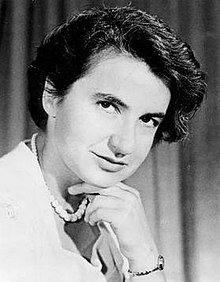 | 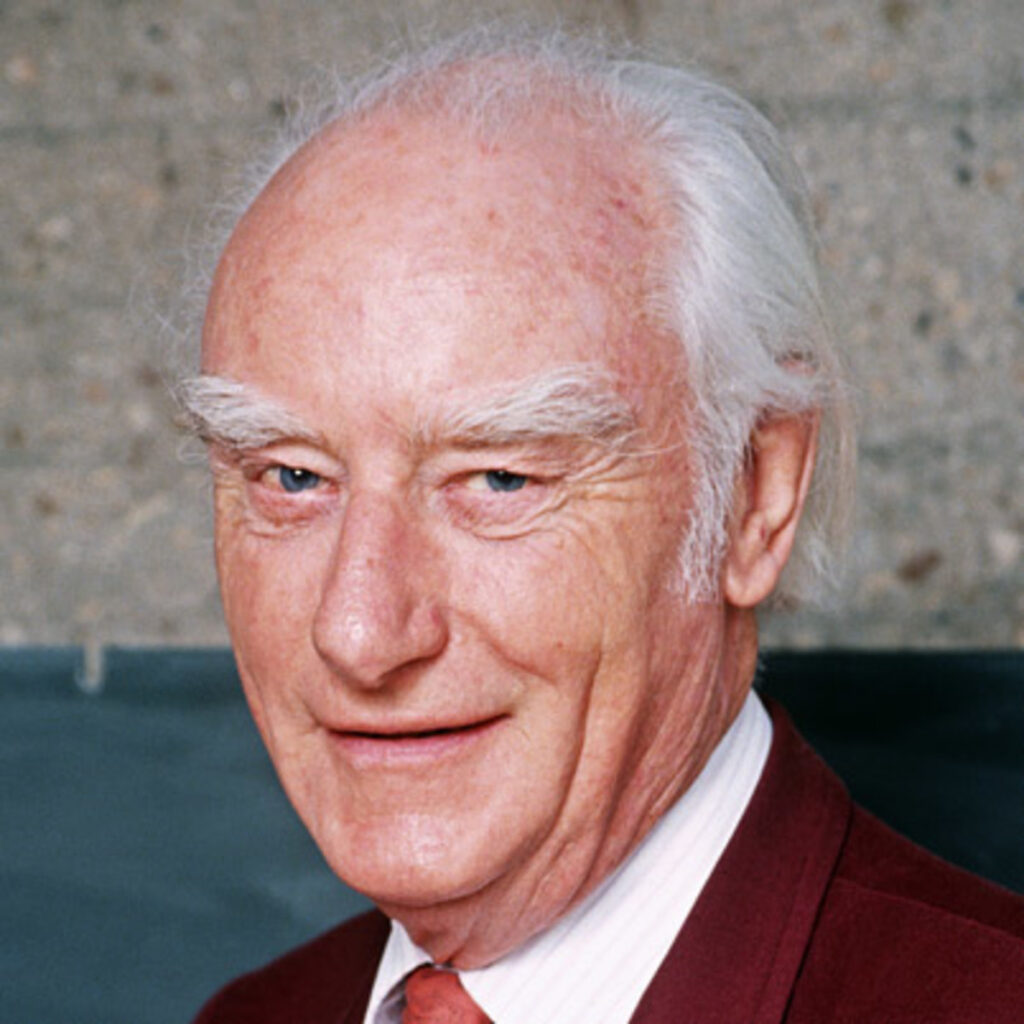 |  |
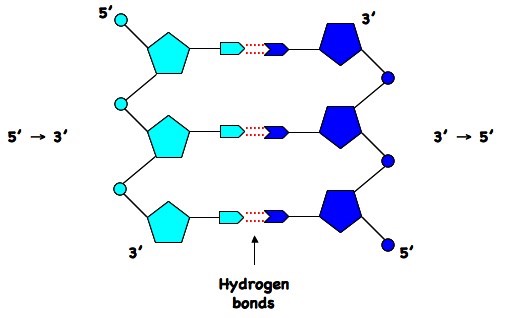
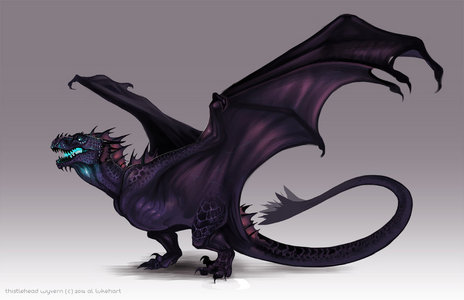
Monomers and Polymers
Do you like Legos?
Do chickens skydive on Thursdays?
Is that a yes?

Good, then you will love this analogy on monomers and polymers. A monomer is a single piece of a larger molecule (polymer), and a polymer comprises two or more monomers. For example, let’s say you are building a level 92 dragon named Amanda. Each Lego piece is a monomer, and the completed dragon is the level 92 polymer.


DNA is a large polymer comprising six billion monomers called nucleotides. A nucleotide consists of three parts:
- A phosphate group
- A deoxyribose molecule (a 5-carbon sugar)
- and a nitrogenous (nitrogen) base

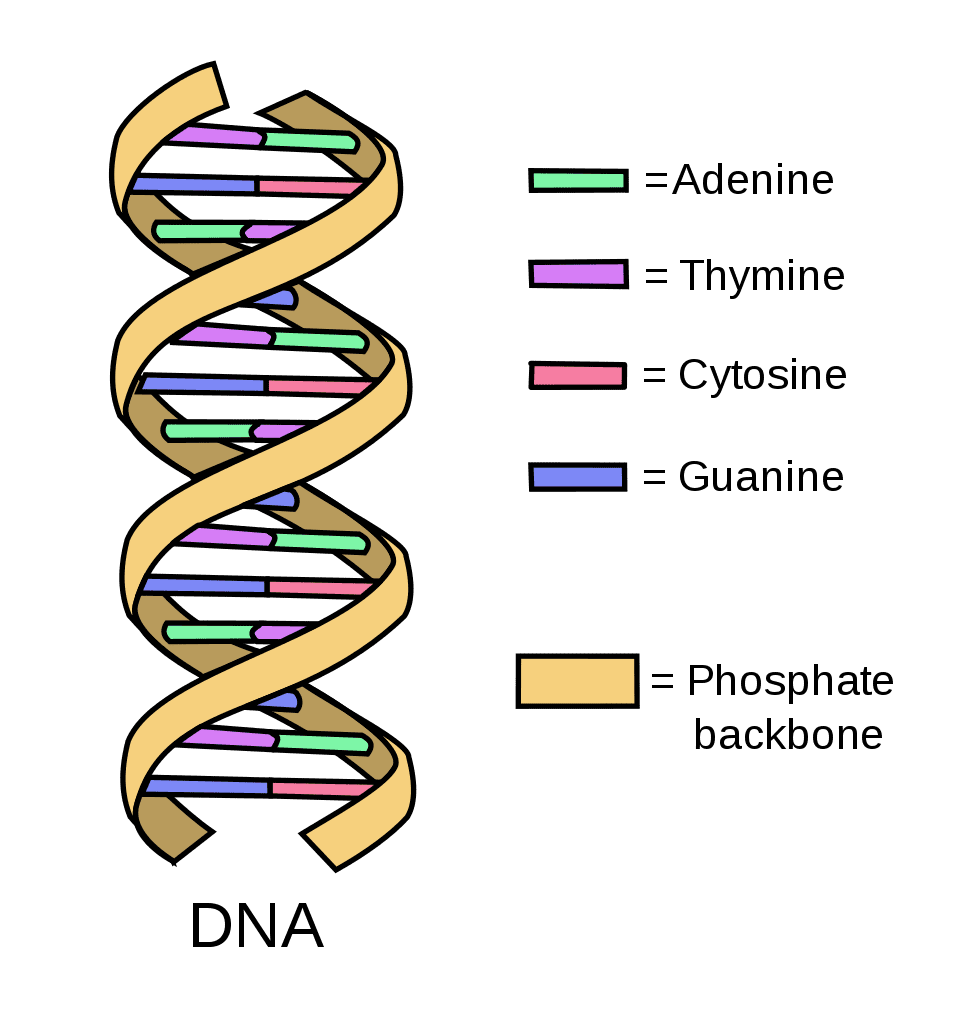
The Structure of DNA
Deoxyribonucleic acid has the shape of a double helix. It is a double-stranded molecule that is about two meters in length but less than three nanometers in width (a nanometer is a billion times smaller than a meter). The small width is why a DNA molecule can fit into a cell’s nucleus (10 micrometers in diameter, or about a million times shorter than a meter).
The DNA backbone consists of strong covalent bonds between the phosphate group of one nucleotide, and another’s deoxyribose. The phosphate-sugar backbone is what keeps a DNA strand together.

The nitrogenous bases are the part of DNA that contains the genetic code. There are four different bases and the arrangement of these bases codes for an organism’s traits. The four bases are:
- Adenine (A)
- Thymine (T)
- Guanine (G)
- Cytocine (C)

Weak hydrogen bonds form between the nitrogenous bases. Adenine forms a hydrogen bond with thymine, and cytosine only forms a hydrogen bond with guanine, in a process called complementary base pairing.

Why DNA is Double Stranded
DNA is a double-stranded molecule because each strand acts as a template to make two identical molecules during DNA replication. During DNA replication
- The enzyme (protein) helicase separates the two DNA strands.
- The enzyme DNA polymerase adds the complementary nucleotides to the two strands of DNA – i.e., adding As to Ts and Cs to Gs.
- The end product is two new identical DNA molecules, each with a strand of the original DNA and a strand with the new DNA.
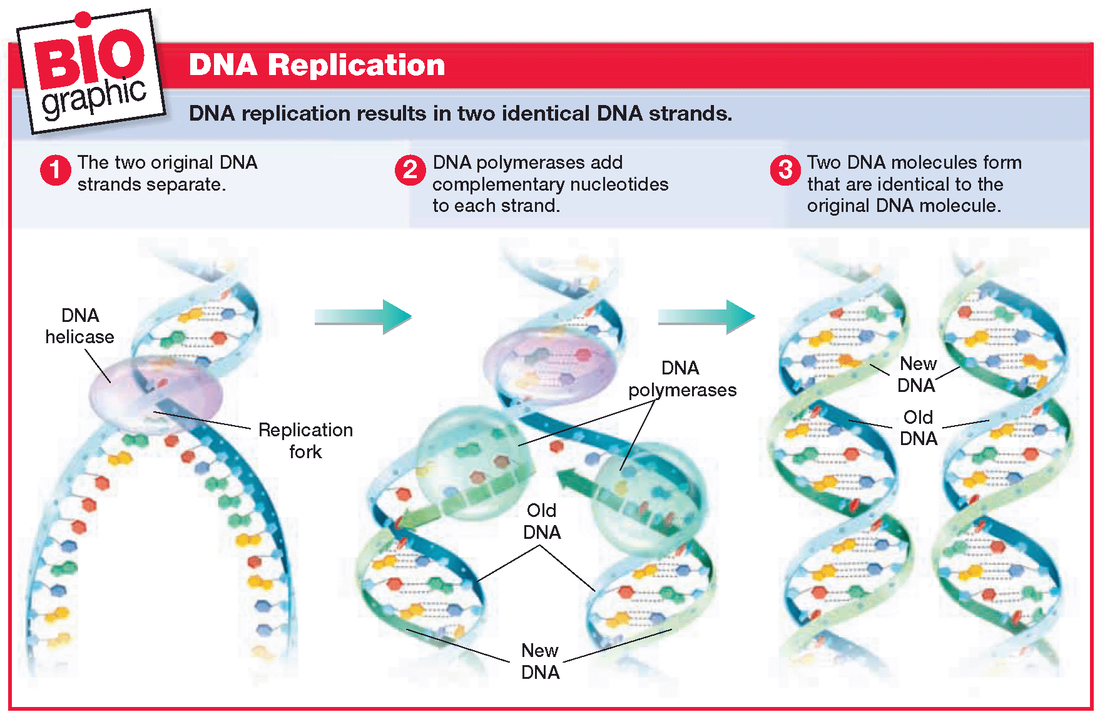
AP Biology Prep
Click here for a more in-depth look at DNA structure and function